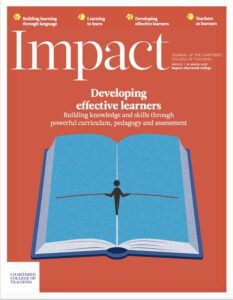Metacognition through prompts in mathematical problem-solving
Written by: Jacob Wilson

8 min read
Why problem-solving? Problem-solving has long had a strong emphasis in mathematics education. In 1982, the Cockcroft Report asserted that ‘the ability to solve problems is at the heart of mathematics’ (Cockcroft, 1982). In recent years, as a result of reforms to the mathematics GCSE, a focus on problemsolving has re-emerged. A minimum of 30% of the marks in higher-tier GCSE papers now involve problem-solving (previously 15–25%), and students are increasingly required to make links between different areas of maths within a broad range of contexts (OFQUAL, 2015).
As a consequence of these curriculum changes and exam reforms, it became apparent that many of my top set Year 11 students, who previously viewed themselves as strong mathematicians, were losing confidence in their ability to solve the increasingly difficult problems expected of them. In search of a possible solution to this, I developed and trialled a new approach to developing my students’ problem-solving abilities
Join us or sign in now to view the rest of this page
You're viewing this site as a guest, which only allows you to view a limited amount of content.
To view this page and get access to all our resources, join the Chartered College of Teaching (it's free for trainee teachers and half price for ECTs) or log in if you're already a member.
This article was published in February 2018 and reflects the terminology and understanding of research and evidence in use at the time. Some terms and conclusions may no longer align with current standards. We encourage readers to approach the content with an understanding of this context.
0
0
votes
Please Rate this content
Please login to comment
0 Comments
Oldest
Newest
Most Voted
Inline Feedbacks
View all comments










